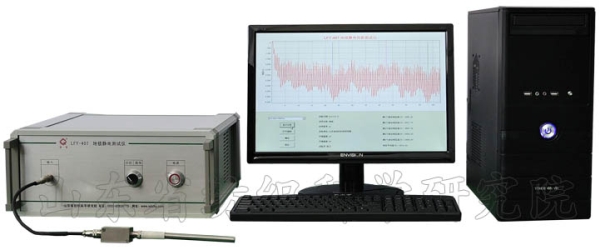
LFY-407A Carpet Static Tester (walking test)
The main purpose
It is mainly used for anti-static detection of carpets and other floor materials. It can be used for quality inspection and technical evaluation by carpet manufacturers, carpet fiber manufacturers, textile (carpet) inspection agencies, aviation and automotive interior decoration industries and scientific research units.
Test principle
When a person is on the carpet under inspection, b) wearing the shoes specified in the standard, c) walking in accordance with the specified way of walking, d) under monitored atmospheric conditions, the voltage generated at this time relative to the earth when walking The potential difference of (0 potential) is measured and used to evaluate the dangerous degree of discomfort caused by electrostatic shock caused by people in the process of using this kind of carpet.
We use the electrostatic potential difference between the human body and the earth to characterize the static electricity of the human body. The tester wears the test shoes specified in the standard on the carpet (floor) under inspection, and walks in the regulated manner according to the standard. When walking in an atmospheric environment, the measurement of the electrostatic potential of the human body at this time actually reflects the electrostatic characteristics of the equivalent charge potential of the opposite sex carried by the carpet.
Technical index
1. Grounded metal bottom plate: (100×200) cm, 1mm thick aluminum plate;
2. Rubber pad: (220×120) cm, thickness (4.5±0.5) mm;
3. Input resistance of voltmeter and handheld electrode system ≥1014Ω;
4. Hand-held electrode input capacitance ≤20pF;
5. Measuring voltage range: (-20~+20) kV, accuracy 0.1kV;
6. Test time: 60s
7. Atmospheric conditions for adjustment and testing: temperature: (23±1)℃, humidity: (25±3)%RH
Standard blanket purchase
Applicable standards
GB /T 18044-2008 Carpet Static Electricity Habit Evaluation Method Walking Test
BS ISO 6356 Flooring fabrics Evaluation of electrostatic characteristics Walking test
EN 1815:2016
It is mainly used for anti-static detection of carpets and other floor materials. It can be used for quality inspection and technical evaluation by carpet manufacturers, carpet fiber manufacturers, textile (carpet) inspection agencies, aviation and automotive interior decoration industries and scientific research units.
Test principle
When a person is on the carpet under inspection, b) wearing the shoes specified in the standard, c) walking in accordance with the specified way of walking, d) under monitored atmospheric conditions, the voltage generated at this time relative to the earth when walking The potential difference of (0 potential) is measured and used to evaluate the dangerous degree of discomfort caused by electrostatic shock caused by people in the process of using this kind of carpet.
We use the electrostatic potential difference between the human body and the earth to characterize the static electricity of the human body. The tester wears the test shoes specified in the standard on the carpet (floor) under inspection, and walks in the regulated manner according to the standard. When walking in an atmospheric environment, the measurement of the electrostatic potential of the human body at this time actually reflects the electrostatic characteristics of the equivalent charge potential of the opposite sex carried by the carpet.
Technical index
1. Grounded metal bottom plate: (100×200) cm, 1mm thick aluminum plate;
2. Rubber pad: (220×120) cm, thickness (4.5±0.5) mm;
3. Input resistance of voltmeter and handheld electrode system ≥1014Ω;
4. Hand-held electrode input capacitance ≤20pF;
5. Measuring voltage range: (-20~+20) kV, accuracy 0.1kV;
6. Test time: 60s
7. Atmospheric conditions for adjustment and testing: temperature: (23±1)℃, humidity: (25±3)%RH
Standard blanket purchase
Applicable standards
GB /T 18044-2008 Carpet Static Electricity Habit Evaluation Method Walking Test
BS ISO 6356 Flooring fabrics Evaluation of electrostatic characteristics Walking test
EN 1815:2016







